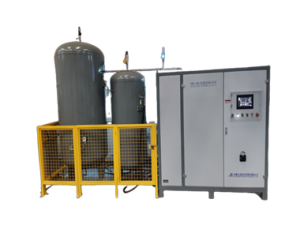Introduction
Helium-filled recovery systems play a crucial role in various industries, including aerospace, oil and gas, and scientific research. These systems are utilized to capture and recycle helium gas, which is an invaluable resource due to its unique properties. However, the operation and maintenance of helium-filled recovery systems present several challenges. This article will explore these challenges and propose potential solutions.
Leak Detection and Control
One of the primary challenges in helium-filled recovery systems is leak detection and control. Helium is an extremely lightweight gas that can escape easily through even the smallest leaks. Identifying and sealing these leaks is vital to ensure efficient helium recovery and prevent wastage. Leak detection methods such as helium mass spectrometry and ultrasonic testing can be employed to detect and locate leaks accurately. Implementing regular inspection and maintenance schedules, along with robust sealing techniques, can effectively control leaks.
System Efficiency and Optimization
Optimizing the efficiency of helium-filled recovery systems is another significant challenge. These systems must be designed to maximize helium recovery rates while minimizing energy consumption. Improved system design, including optimized piping layouts and enhanced heat exchanger efficiency, can enhance recovery rates. Furthermore, employing advanced control algorithms and real-time monitoring can help regulate system parameters and optimize performance.
Contaminant Removal
Contaminants present in the captured helium stream pose challenges to recovery systems. Impurities such as moisture, hydrocarbons, and other gases can degrade the purity of the recovered helium. Effective contaminant removal techniques, such as adsorption beds, molecular sieves, and filtration systems, can be integrated into the recovery process. Regular maintenance of these purification systems is necessary to ensure long-term effectiveness.
Safety Considerations
Operating helium-filled recovery systems requires careful attention to safety measures. Helium is an asphyxiant gas, and handling it improperly can pose risks to personnel. Proper training and adherence to safety protocols are essential. Implementing safety features such as gas detection systems, ventilation, and emergency shutdown procedures is crucial to mitigating potential hazards.
Cost and Economic Viability
The cost of implementing helium-filled recovery systems can be a significant hurdle for many industries. The initial investment in equipment, installation, and ongoing maintenance can be substantial. However, the economic viability can be improved by considering long-term benefits, such as reduced helium consumption and lower operational costs. Exploring partnerships, government incentives, and technological advancements can also contribute to making these systems more economically feasible.
Conclusion
Helium-filled recovery systems are vital for capturing and recycling helium gas, a valuable resource with diverse applications. Overcoming challenges such as leak detection, system efficiency, contaminant removal, safety considerations, and cost can lead to improved performance and sustainability. By implementing advanced technologies, regular maintenance, and strict safety protocols, industries can optimize helium recovery processes and ensure the long-term availability of this precious resource.








